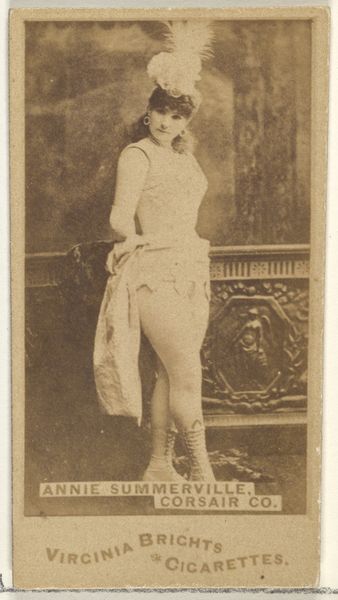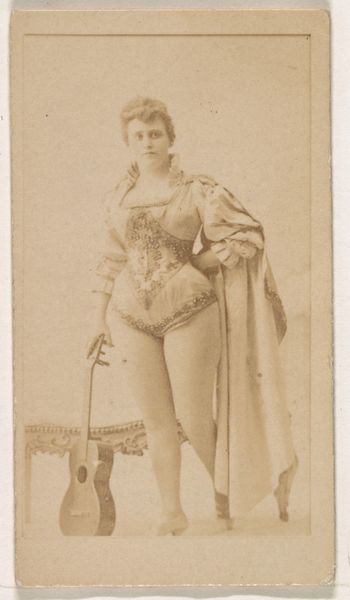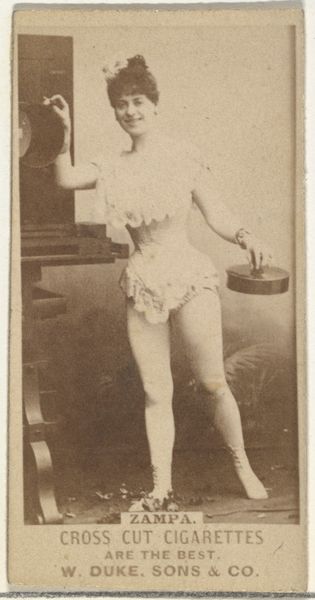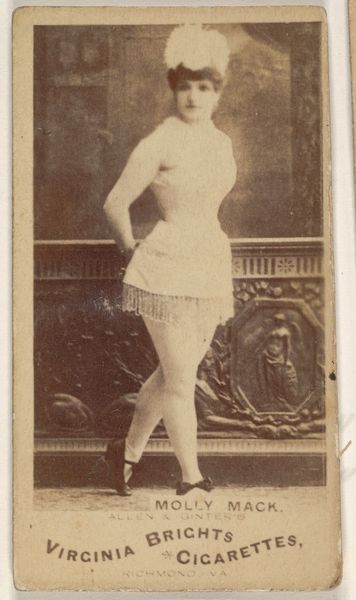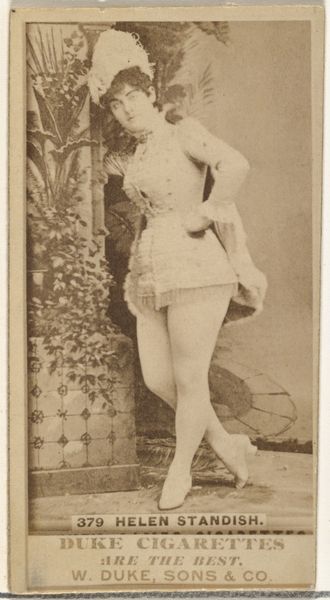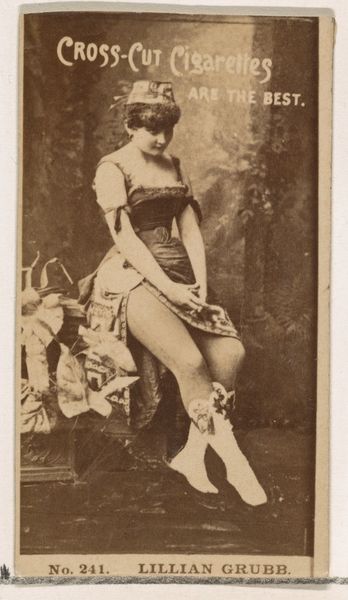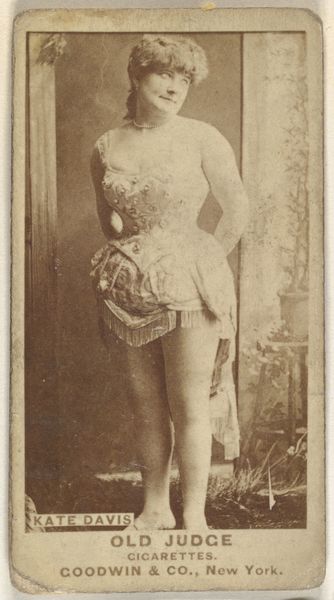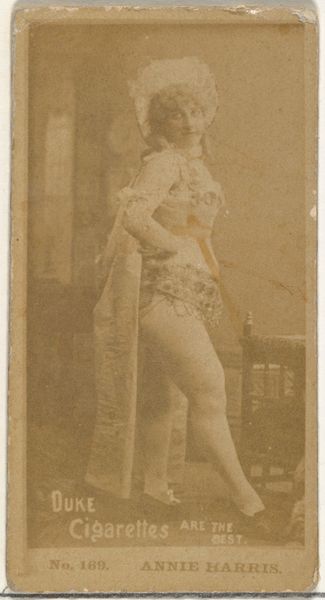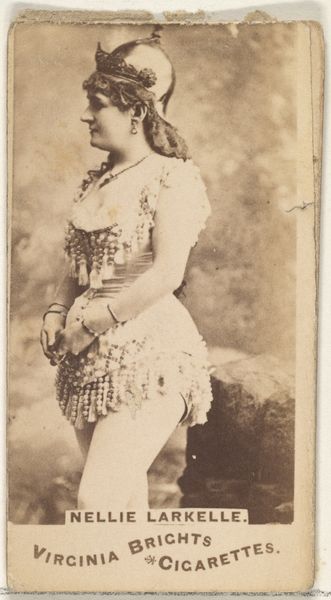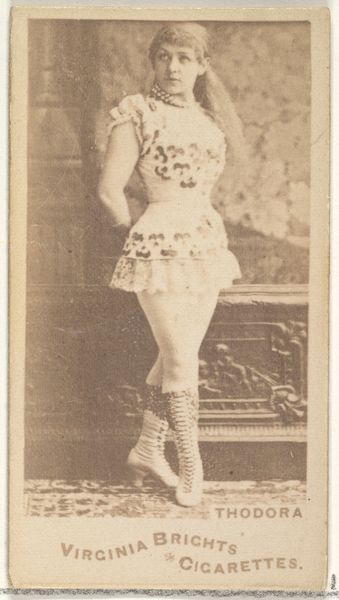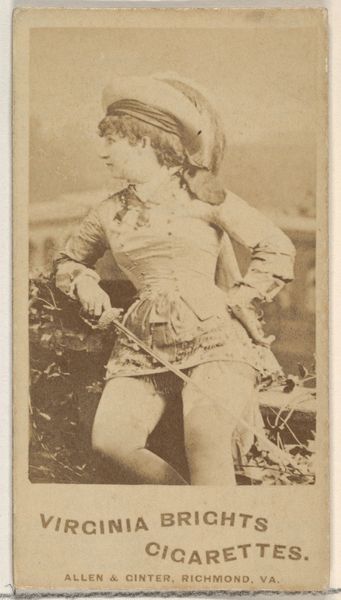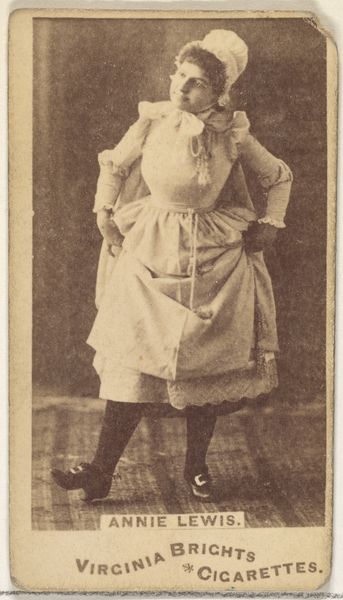
Card 778, Emma Carson, from the Actors and Actresses series (N45, Type 2) for Virginia Brights Cigarettes 1885 - 1891
0:00
0:00
drawing, print, photography
#
portrait
#
drawing
#
aged paper
#
toned paper
# print
#
photography
#
genre-painting
Dimensions: Sheet: 2 3/4 x 1 3/8 in. (7 x 3.5 cm)
Copyright: Public Domain
Editor: This is "Card 778, Emma Carson," a print from between 1885 and 1891, part of the Actors and Actresses series made by Allen & Ginter for Virginia Brights Cigarettes. It looks like a photograph on toned paper. What really strikes me is how this object blurs the line between art and advertising. How should we interpret it in a historical context? Curator: It’s crucial to remember these cards were essentially advertisements. Allen & Ginter used popular actresses like Emma Carson to promote their cigarettes, capitalizing on the public's fascination with celebrity. Consider the broader context of late 19th-century consumer culture; images like this fueled desires and shaped perceptions of beauty and success. It presents an interesting collision of the public persona of stage actresses and how they became a marketing tool. Where was it exhibited? Or maybe the right question is, who *consumed* it and *how*? Editor: So, it's less about high art and more about the popular image circulated amongst the public? Did people at the time view these as disposable items or something of value? Curator: Exactly! The value resided less in its artistic merit and more in its connection to a celebrity and the act of consumption – buying cigarettes. Though seemingly disposable, these cards were often collected and traded. This tells us much about the increasing commodification of fame. And the role of art, too; note the portrait-style. Was it considered art when photography was itself at an experimental, adolescent stage? Editor: I see it now. So the card's existence reflects the shifting relationship between art, celebrity, and consumerism in the late 19th century. It makes you think about how social structures influenced visual culture! Curator: Precisely! Understanding the social and economic forces behind its production and distribution provides crucial insight into its cultural significance beyond its aesthetic appeal. Editor: This really shows the value of analyzing an image not just for its artistic qualities but also for its role within broader historical and social systems. Thanks for illuminating that perspective.
Comments
No comments
Be the first to comment and join the conversation on the ultimate creative platform.

